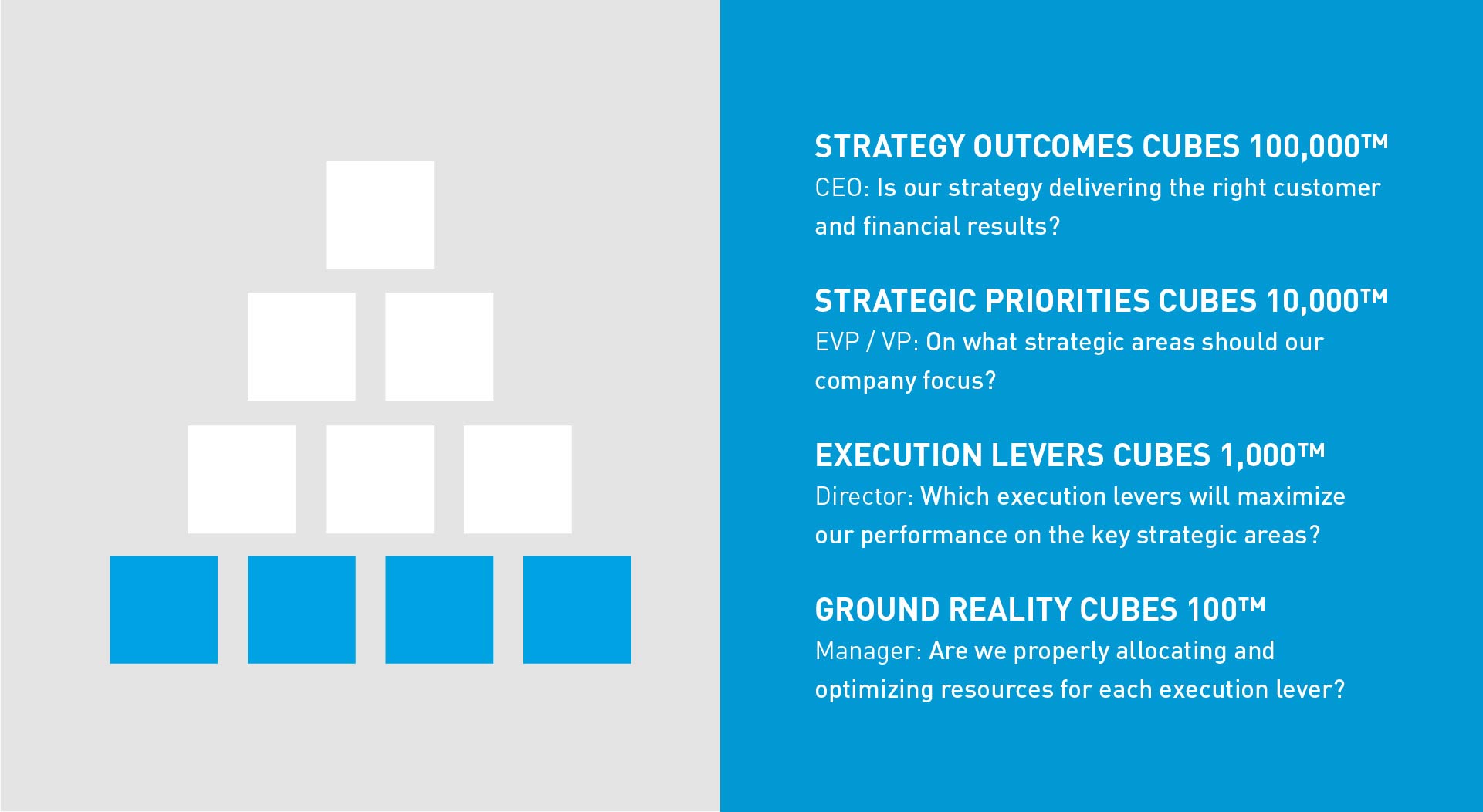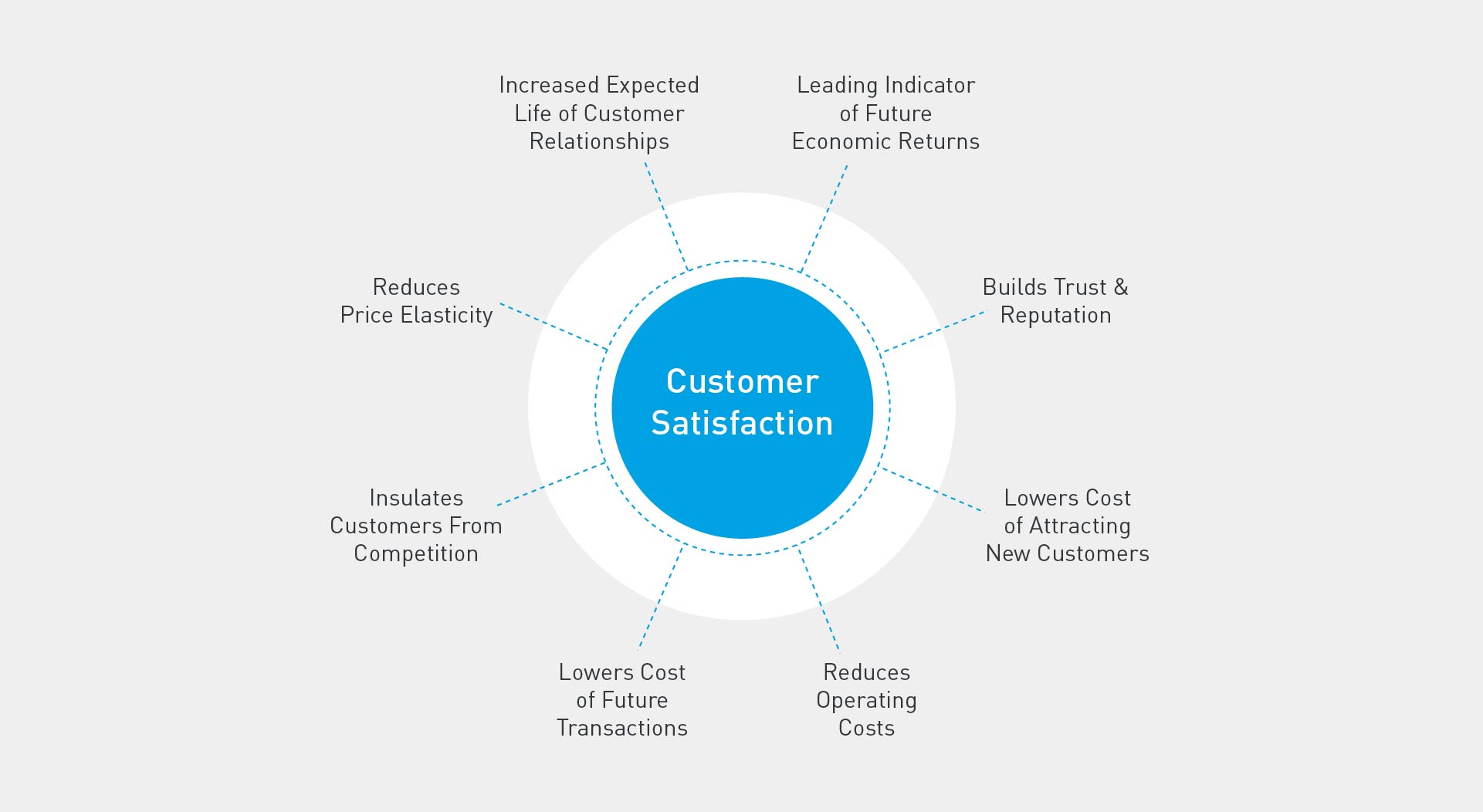Resources & Presentations
The Collaborative for CUBES™ Method

Recognizing customers are the ultimate source of cash flow and financial value, firms continuously invest in strategic priorities and execution activities designed to satisfy them. It doesn’t always go well. Many times, businesses are confused about the specific strategic areas in which they should invest. Other times, they debate the execution levers that should be the focus of their investment.
Ultimately, every activity, decision, and strategy can be justified as an attempt to satisfy customers. As a consequence, companies often find themselves embroiled in a variety of misaligned strategic initiatives and execution activities they believe are helping customers. Customers see it differently—they see a company that is unfocused, inconsistent, and not satisfying their needs.
That's why BrandExtract's partner, The Collaborative for Customer-Based Execution and Strategy (CUBES®), has a framework that helps align a company’s strategy and execution at all levels in a way that not only satisfies customers, but also achieves the desired financial results. CUBES® provides guidance, based on rigorous, proprietary statistical analysis, to define strategy outcomes, develop strategic priorities, identify execution levers, and translate the execution levers into concrete, actionable, ground-level reality. The CUBES® framework, a blueprint to generate sustainable and profitable growth, specifies seamless integration of activities at four different firm levels. The four levels are shown in Figure 1.
Figure 1. Collaborative for Customer-Based Execution Strategy

Focus, Alignment & Accountability Through CUBES®
Firms today are larger and more complex than ever before, and the advice given to management and executives is becoming more fragmented and specialized. This leads to horizontal and vertical misalignment in many companies:
- At the 100,000-foot level, chief executive officers (CEOs) are accountable to their boards and shareholders for delivering results — financial and non-financial. What results should be the CEO’s focus, and how should they be measured? CEOs must have an integrated set of metrics that can provide a measure of the current and future health of the firm that can be benchmarked on a consistent basis and allow the executive to hold his/her team accountable. In short, the strategy outcomes should be linked to the strategic priorities set at the executive vice president/vice president (EVP/VP) level.
- EVPs and VPs reporting to the CEO require clarity in defining and prioritizing strategic areas. At the 10,000-foot level, they must determine the strategic priorities that can best deliver the strategy outcomes — sales, margins, EBITDA, customer retention — that CEOs must deliver at the 100,000-foot level. Simultaneously pursuing many strategic areas without prioritization misuses and wastes resources. EVPs must define and measure performance on specific strategic areas in a way that helps them hold their direct reports — directors and senior-managers — accountable.
- EVPs’ 10,000-foot strategic priorities can help directors and senior managers address the right execution levers at the 1,000- foot level. When directors have clarity on strategic priorities, they can determine the specific levers that are fully aligned with them. Collaborative for CUBES™ provides a mechanism to quantify the effectiveness of the execution levers at the 1,000- foot level, relating them to the strategic priorities set by EVPs at the 10,000-foot level and the strategy outcomes desired by the CEO at the 100,000-foot level.
- Front-line employees and managers represent the ground reality at the 100-foot level. These employees are typically in direct contact with customers and accountable for using resources to conduct activities that affect customer-related outcomes. If these resources and activities are misaligned with the 10,000- foot execution levers, the firm may not see the desired results. Frontline employees and managers also benefit from knowing if their activities are aligned with directors’ execution levers, EVPs’ strategic priorities, and the CEO’s strategy outcomes.
CUBES 100-100,000: Level-to-Level
CUBES® uses a blueprint that allows an organization to quantify, visualize, and execute a streamlined customer-based approach to management. It provides four levels of actionable insights. As shown in Figure 1, each level of CUBES® builds on the previous level. Collectively, the levels can be used as the basis of an aligned and focused strategy that will allow a firm to execute effectively.
CUBES 100,000: Strategy Outcomes
At the 100,000-foot level, CUBES® provides guidance to the CEO, who is most concerned about the success of his or her company’s overall strategy. Success is measured based on a diverse set of financial and non-financial outcomes, each closely related to overall customer satisfaction. CUBES® rigorously measures and quantifies these outcomes to provide a benchmarking platform across peers, within divisions, and over time. This allows CEOs to gauge business performance.
1. Non-financial metrics: The experience of companies in multiple industries has shown an exclusive focus on financial metrics can be misleading. CEOs may be tempted to achieve short-term financial results at the expense of long-term, forward-looking metrics that help build a high-quality customer base. A customer-based strategy, the cornerstone of Collaborative for CUBES™, dictates firms prosper in the long run when they have highly satisfied customers, which further improves the quality of the firm’s client base through the “customer-satisfaction effect” (see Figure 2).
Figure 2. The Customer Satisfaction Effect

Non-financial metrics provide a CEO with a strong sense of his or her company’s customer-base health. Non-financial metrics are based on customer loyalty metrics, which are robust predictors of financial outcomes. CUBES® uses a set of forward-looking, academically rigorous loyalty metrics offering high predictive validity with respect to financial metrics. These non-financial metrics include:
- Rate of supplier reuse for new jobs.
- Recommendation rate.
- Positive word-of-mouth activities.
- Pricing power.
2. Financial metrics: Ultimately, CEOs are held accountable for financial results, which may include top-line metrics, bottom-line metrics, or metrics associated with firm value. These include but are not limited to:
- Sales, revenues (top-line).
- Margins, EBITDA (bottom-line).
- Stock returns (firm value).
3. Relating financial and non-financial metrics: When a firm has a coherent and aligned customer-based strategy, its financial and non-financial metrics operate in tandem. Collaborative for CUBES™ features a built-in mechanism to clearly quantify how financial and non-financial metrics are aligned.
Collaborative for CUBES™ explicitly recognizes successful strategy is based on satisfying customer needs. Satisfied customers reward firms with repurchase, recommendations, pricing power, and positive-word-of mouth activities. These translate into higher sales, revenues, margins, and EBITDA. By providing a concrete quantification of the association of financial and non-financial metrics, CUBES® provides CEOs with a ready platform for comprehensively assessing their desired outcomes.
At the 100,000-foot level, CUBES® monitors strategy outcomes. It can easily adapt to provide the metrics needed for benchmarking different firm divisions, different firms in an industry, or even firms across different industries. A CEO can use these benchmarks to gauge firm performance comprehensively
CUBES 10,000: Strategic Priorities
While the CEO is accountable for and focused on strategy outcomes, his or her direct reports — VPs and EVPs — focus on enabling the CEO to deliver those outcomes.
At the 10,000-foot level, different VPs are responsible for varying strategic areas, where each area constitutes a strategic priority. These strategic areas in a typical organization may include:
- Sales, bidding, and business development.
- Product and service quality.
- Safety.
- Sustainability and corporate social responsibility.
- Pricing and billing.
- Ongoing service and support.
- Communications.
If these strategic areas are not systematically prioritized, each VP is likely to focus only on the area for which he or she is responsible while ignoring the others. This can lead to confusion and virtually ensures the VPs will be misaligned and depleting focus on key areas. Such confusion at the 10,000-foot level will eventually undermine the CEO’s ability to achieve the desired 100,000-foot strategy outcomes.
CUBES® helps firms prioritize strategic areas based on their relative association to overall customer satisfaction. CUBES® assigns specific weights to each strategic area, so they can be prioritized in a way that is objective, evidence-based, and conflict-free. Prioritizing strategic areas at the 10,000-foot level ensures VPs can agree on their focus and alignment.
For example, CUBES® may identify pricing is twice as important as communications in driving strategy outcomes. As such, VPs may agree to focus their efforts on pricing to ensure success.
CUBES® provides a built-in mechanism to benchmark the firm’s performance on each strategic area, specifically those designated as priorities. If pricing is determined to be twice as valuable as communications, CUBES 10,000 allows a firm to:
- Benchmark its performance on pricing relative to other strategic areas, such as communication, ongoing service, etc.
- Benchmark its performance on pricing among different divisions and units.
- Benchmark its performance on pricing relative to competitors.
CUBES 10,000 not only helps VPs prioritize strategic areas that support overall strategy outcomes, but it also gauges performance on the strategic priorities. Doing so can ensure the VPs are aligned and focused. It also provides the CEO a transparent way to hold VPs accountable using customer-based metrics to benchmark performance.
CUBES 1,000: Execution Levers
Once VPs and EVPs agree on strategic priorities, they can rally their direct reports — directors and senior managers — to execute on them. At the 1,000-foot level, directors and senior managers can align with and execute on the VPs’ strategic priorities rather than execute on initiatives of their choosing. This ensures execution at the 1,000-foot level is fully synced with the 10,000-foot strategic priorities.
Consider a real-world case in which a firm found communications to be the most heavily weighted strategic priority. In analyzing the company, CUBES 1,000 identified three potential execution levers:
- Communicating frequently throughout the sales team.
- Keeping clients informed of project progress.
- Answering customer calls within 24-hours.
Rather than use instinct or guesswork, CUBES 1,000 statistically determined the relative efficacy of each execution lever in improving performance on communications as a strategic area. CUBES 1,000 determined the relative weight of answering customer calls within 24 hours, at 45%, was higher than the weight of the other execution levers. As such, the communications director developed specific initiatives to ensure calls were answered promptly, including:
- Hiring additional staff.
- Updating the phone system.
- Developing a web-based platform for customers to receive support.
As the percentage of calls answered within 24 hours increased, the company’s customer-based scores on the strategic area of communications also went up. Overall, this was reflected in increased customer retention and margins.
CUBES 100: Ground Reality
Once they focus on specific execution levers, directors and senior managers can help frontline employees and lower-level managers achieve specific outcomes through focus and accountability. In other words, directors and senior managers can link the execution levers at the 1,000-foot level to specific activities performed by frontline employees at the 100-foot level. CUBES® provides guidance in this regard by ensuring frontline employees understand the prioritization of the strategic areas and execution levers and keeping their efforts and resources focused on activities that directly support them.
For example, for the company in which the strategic area of communications was related to customer calls being answered within 24 hours, the execution lever could be related to the ground-level reality of customer-service representatives through activities such as training (to answer calls), accountability and incentives (for answering calls). Through Collaborative for CUBES™, the managers were able to track specific metrics for each customer-service representative to ensure the execution lever at the 1,000-foot level was being implemented at the 100-foot level. Reciprocally, frontline employees at the 100-foot level could see how their attempt to answer calls within 24 hours contributed to the execution levers at the 1,000-foot level and strategic priorities at the 10,000-foot level. Such alignment eliminates waste and conflict within an organization.
CUBES® can provide specific approaches to operationalize and manage these activities in the most efficient and effective way, ensuring the ground reality is fully aligned with the overall strategic outcomes sought by the CEO.
Conclusion
As modern firms grow larger and more complex and business advice becomes increasingly specialized, firms can find it difficult to align the actions of their frontline employees with the vision of their CEOs. Through rigorous statistical analysis of proprietary survey data and robust financial reports, the CUBES® framework eliminates that concern, providing a blueprint for aligning the goals of every level of an organization from top to bottom.
With the experience and tools provided by BrandExtract and CUBES®, companies can not only come to understand why they must align the strategy outcomes desired by their CEO with the strategic priorities selected for focus by EVPs, strategic priorities with the execution levers pulled by directors and senior managers, and execution levers with the ground reality of managers and floor workers, they have the statistical tools needed to most effectively do so.
